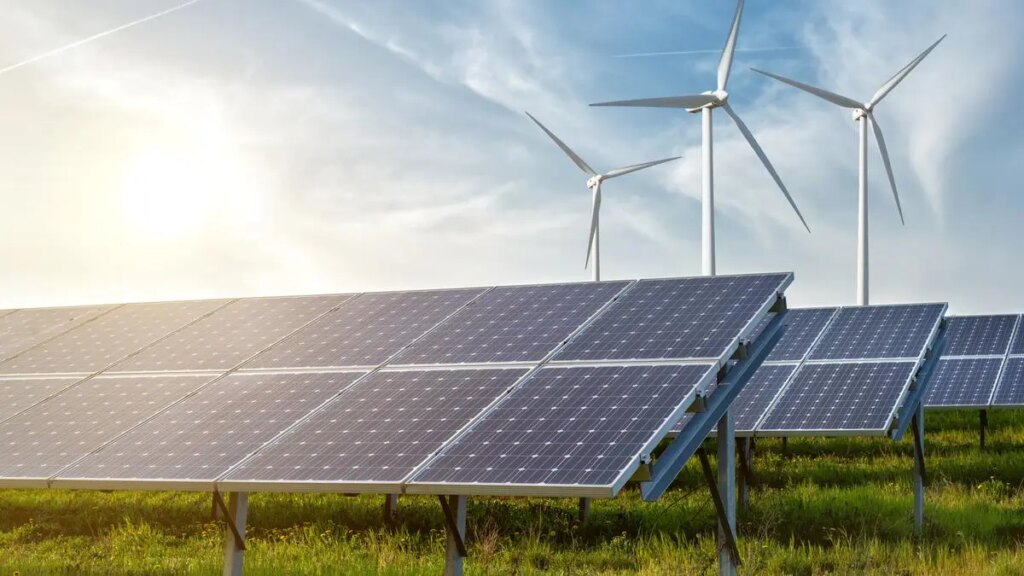
Reliance commissions first line of solar manufacturing, targets 10 GW capacity
Reliance Solar Manufacturing: First Line Commissioned, Targets 10 GW Capacity
Table of Contents
Reliance Solar Manufacturing: A Major Milestone
Reliance Industries Ltd has achieved a significant breakthrough in its Reliance Solar Manufacturing initiative by commissioning the first production line for solar panels. This development marks a crucial step in the conglomerate’s ambitious $10-billion renewable energy plan announced in 2021, which encompasses renewables, storage, and hydrogen technologies. The Reliance Solar Manufacturing facility aims to support India’s journey toward energy independence while helping the company achieve its net zero emissions goal by 2035.
The newly commissioned production line represents the beginning of Reliance’s large-scale entry into solar PV module manufacturing, positioning the company alongside other major players in India’s solar sector such as Adani Group, Tatas, Waaree Energie, and Vikram Solar. This strategic move comes at a critical time when the Indian government has mandated that from June 2026, all clean energy projects must utilize solar photovoltaic modules made from locally-produced cells, reducing dependence on Chinese imports while boosting domestic manufacturing capabilities.
Key Highlights of Reliance Solar Manufacturing Initiative
- First production line for solar PV modules now operational
- Part of Reliance’s $10 billion commitment to green energy
- Initial capacity of 10 GW annually, designed for quick expansion to 20 GW
- Manufacturing solar panels that can generate 720 watts at peak – among the industry’s highest capacity panels
Reliance’s Ambitious Solar Expansion Plans
The Reliance Solar Manufacturing facility is being developed with significant scalability in mind. According to V Srikanth Venkatachari, Chief Financial Officer (CFO) of Reliance, the initial 10 gigawatt per annum capacity “is designed in such a way that we can quickly jump it up to 20 GW.” This forward-thinking approach demonstrates Reliance’s commitment to establishing itself as a dominant force in India’s solar manufacturing sector.
Beyond solar panel production, Reliance is also focused on developing 30 GWh of battery manufacturing capacity. The presentation to investors revealed plans for “20 GWh initial capacity expandable in modular fashion,” highlighting the company’s comprehensive approach to renewable energy infrastructure. These integrated facilities are part of Reliance’s ‘giga factories’ being constructed on a massive 5,000-acre site at Jamnagar in Gujarat.
The Complete Green Manufacturing Ecosystem
The Reliance Solar Manufacturing initiative forms just one part of a larger green energy manufacturing ecosystem. The company is building a series of interconnected ‘giga factories’ that will produce not only PV modules but also batteries, hydrogen electrolysers, and fuel cells. This integrated approach allows Reliance to create synergies across different renewable technologies while maximizing efficiency and innovation.
Srikanth emphasized that the engineering for the entire solar chain is complete, with long-lead items and procurements already secured and construction progressing rapidly. The company has also acquired land in the Kutch region of Gujarat for electricity generation from sunlight, with work already underway. Additionally, Reliance has secured 2,000 acres of land in Kandla where a green hydrogen ecosystem will be developed.
| Reliance Green Energy Component | Current Status | Target Capacity |
|---|---|---|
| Solar PV Manufacturing | First line commissioned | 10 GW (expandable to 20 GW) |
| Battery Manufacturing | In development | 30 GWh (20 GWh initial) |
| Green Hydrogen Facility | Land acquired, planning phase | Multi GW electrolyser manufacturing |
| Compressed Biogas Plants | 10 plants operational | 55 integrated plants by 2025 |
Impact on India’s Renewable Energy Goals
The Reliance Solar Manufacturing project aligns perfectly with India’s broader renewable energy objectives. The country has set an ambitious target of achieving 500 gigawatts (GW) of renewable energy capacity by 2030, and domestic solar panel manufacturing will be instrumental in reaching this goal. By establishing local production capabilities, Reliance is helping reduce India’s dependence on imported solar equipment while creating jobs and fostering technological innovation within the country.
The government’s mandate requiring locally-manufactured solar cells in all clean energy projects from June 2026 makes Reliance’s timing strategic. As one of India’s largest conglomerates, Reliance has the capital, technical expertise, and market influence to become a cornerstone of India’s solar manufacturing ecosystem, potentially transforming the country from an importer to an exporter of solar technology in the coming decades.
Reliance’s Comprehensive Green Energy Strategy
Beyond solar manufacturing, Reliance is pursuing a multi-faceted approach to renewable energy:
- Acquiring land and transmission infrastructure to generate 150 billion units of electricity
- Building a fully integrated green hydrogen to green chemicals complex at Kandla, Gujarat
- Developing 55 integrated compressed biogas (CBG) plants by 2025 (10 already operational)
- Leveraging strategic partnerships and acquisitions like REC Group to access cutting-edge technology
Future Developments and Technological Edge
The Reliance Solar Manufacturing initiative benefits significantly from the company’s 2021 acquisition of REC Group, a Singapore-headquartered solar manufacturer and materials company. Reliance is leveraging REC’s technology for its integrated solar production facilities, giving it access to industry-leading expertise. This technological advantage is evident in the company’s production of solar panels capable of generating 720 watts at peak, which Srikanth noted are “possibly the largest panels” available.
Reliance’s Reliance New Energy subsidiary is investing $7.2 billion in a green energy manufacturing complex in Jamnagar, Gujarat. This ambitious project will eventually encompass solar PV, battery cell and storage systems, electrolysers, raw and auxiliary materials, power electronics and semiconductor production facilities, and a dedicated R&D center. This comprehensive approach positions Reliance to become not just a manufacturer but an innovator in renewable energy technologies.
Conclusion: Reliance’s Green Energy Transformation
The commissioning of the first line of Reliance Solar Manufacturing represents a significant milestone in Reliance Industries’ transformation into what it aims to become: “one of the world’s leading ‘energy and materials company’.” This strategic pivot from traditional oil and petrochemicals into renewable energy underscores the changing energy landscape globally and positions Reliance at the forefront of India’s green energy revolution.
With its massive investment in integrated manufacturing facilities, strategic acquisitions, and comprehensive approach to the renewable energy value chain, Reliance is creating a sustainable foundation for long-term growth. The Reliance Solar Manufacturing initiative, with its focus on scalability and technological excellence, exemplifies the company’s commitment to leading India’s transition to clean energy while creating economic value and achieving its own net zero emissions goals by 2035.
Published on April 28, 2023






